- Administrator
- Albums and Singles
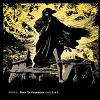 Grails show the extent of their skill on the nine songs included here with a departure from their established sound. Black Tar Prophecies is easily the best thing they’ve done so far. They’ve found their own distinct sound and are all the better for it.
Grails show the extent of their skill on the nine songs included here with a departure from their established sound. Black Tar Prophecies is easily the best thing they’ve done so far. They’ve found their own distinct sound and are all the better for it.
Black Tar Prophecies shows a new side to Grails. Previous to this I’ve found them quite boring: a post-rock band in the most clichéd sense. Having lost their violin player (quite literally, he’s gone missing) they have had to reassess their way of playing. The rapid shift in direction has benefited their development, however. They explore a wide variety of styles to create a psychedelic mood with a vaguely eastern hue to most of the music. There’s even a deliciously dirty jazz quality that rears its head from time to time, most noticeably on “Bad Bhang Recipe” which has a touch of Barry Adamson about it.
The album has an extremely clean sound to it (even the fuzzed out guitar). The production and mix have been very sympathetic to the music. “Back to the Monastery” sounds like Grails are playing live in the room while “Black Tar Frequencies” shows more evidence of postproduction which don’t sound like they were just tacked on, the echo added to all the percussion instruments suits the mood of the piece perfectly. The production isn’t too pristine; the warmth of the instruments is still preserved.
Two pieces stand out on Black Tar Prophecies: “Stray Dog” and the title track. Guitars, bouzouki and banjo create a swirling, hypnotic and hallucinogenic rapture. It's fantastic enough to make me wish it was at least five times as long. “Black Tar Prophecy” amalgamates all the different musical threads from the previous tracks. I don’t have as many adjectives for it as I do for “Stray Dog” but it is a powerful piece nonetheless. Grails pick up the pace on this piece compared to most of the other tracks which are more laid back. It’s a nice, uplifting way to end the album.
Black Tar Propechies is a great release and I now regret not getting the original 12” releases when they came out as I would have loved to have had more time with this music. At this point, it is hard to find those vinyls now and I would hate to have to get the same music again for the two songs not on the first two volumes. As it stands, Grails have definitely earned my admiration with this release and if it’s not in my top albums of the year I’ll be very surprised.
samples:
Read More
- Administrator
- Albums and Singles
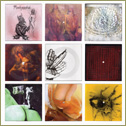 Hats off to anyone who managed to collect all 13 lathe cuts that this LP compiles, but you can now file them away for a rainy ebay. It’s refreshing to see a label that’s specialised, so far, in miniature runs of lathes attempting to get the music out to a wider audience. As well as being considerably lighter on the wallet, Aryan Asshole Records Compilation Volume 1 is an excellent snapshot of the current cream of the crop in the American underground. Stick this in a time capsule, give it twenty years and it’ll be the new Nuggets.
Hats off to anyone who managed to collect all 13 lathe cuts that this LP compiles, but you can now file them away for a rainy ebay. It’s refreshing to see a label that’s specialised, so far, in miniature runs of lathes attempting to get the music out to a wider audience. As well as being considerably lighter on the wallet, Aryan Asshole Records Compilation Volume 1 is an excellent snapshot of the current cream of the crop in the American underground. Stick this in a time capsule, give it twenty years and it’ll be the new Nuggets.
With this being Nate Young’s (Wolf Eyes) label, this record is unsurprisingly populated with his extended musical family. Dead Machines, Burning Star Core, Failing Lights, Graveyards, Aaron Dilloway and Religious Knives all do their thing, sometimes cutting some of their finest work to date here. The sound, on a technical (‘ooh look at my posh separates stereo’) level, is, as expected with this line-up, uniformly atrocious. But whoever truly cares about getting music only via carefully crafted sound are probably not going to be checking out any of these acts anyway. Combined with that lathe edge, the sound has a border of murkiness and static that only adds to its subterranean feel. The worlds of broken machine where man and weed meet in basements across America.
Amongst the consistently incredible tracks is another in the great run of Failing Lights' subtler material, a woozy Graveyards session and the greasy smeared musical imprint of Charlie Draheim. Snuck away inside these tracks is a recording of NASA chatting to the original moon landing crew, although I have no idea why. This piece very quickly becomes a mild irritant to an otherwise perfect recording, apart from this though the album stands a definitive cross section of a multi-faceted genre.
samples:
Read More
- Scott Mckeating
- Albums and Singles
This is the final instalment in D_Rradio’s 7" trilogy for Distraction records, so it’s only right it be seasoned with melancholy. These two hybrid organisms continue this series' flow by excavating stratums of colorful electronic music through fragmented arrangements.
“Out of Love”s cranked slo-mo start blossoms into life as the loosest track yet in this series, the breaks and warm sliding guitar part held together with sticky tape. The glitchy beginnings of “You Hold my Breath” quickly give way to what appears to be a seemingly slow build. Over the length of the track it becomes apparent that it’s never going to reach its fulminating moment. Held together with wobbly rivets, much like the flipside “Out of Love”, it moves without a real structure. The elements of synth and flickers of sitar may never gain a strong enough foothold in an obvious melody, but the song remains startlingly fresh. Bizarrely, in its dying moments it picks up a New Order styled vibe but cracks up and skitters out.
The brief glimpse may be a hint of a new direction, something a little more pop / song orientated, or it could be just the way the layers fell.
Read More
- Administrator
- Albums and Singles
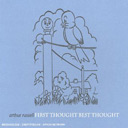 Yet another posthumous Arthur Russell release from Audika, this two-disc set collects rare and unreleased orchestral material by the late NYC artist. Because the material presented here is, at least ostensibly, the most "avant-garde" in form and content yet released from the Russell archives, I expected the music to be difficult, abstract and academic. However, nothing could be further from the truth, as Russell again utilizes avant-garde techniques only as a method of approaching popular music obliquely, creating music that is as ingratiating as it is unique.
Yet another posthumous Arthur Russell release from Audika, this two-disc set collects rare and unreleased orchestral material by the late NYC artist. Because the material presented here is, at least ostensibly, the most "avant-garde" in form and content yet released from the Russell archives, I expected the music to be difficult, abstract and academic. However, nothing could be further from the truth, as Russell again utilizes avant-garde techniques only as a method of approaching popular music obliquely, creating music that is as ingratiating as it is unique.I find it strange that Arthur Russell has been claimed by the intellectual beard-stroking crowd that characterizes the staff and readership of pubs such as The Wire, because Russell produced at least as much music that was unashamedly pop as that which could be considered "avant-garde" in his lifetime, probably more. Although he was associated with The Manhattan School of Music and "serious" composers such as Philip Glass, he seemed to spend most of him time merging these more academic techniques with the music that he loved—disco, symphonic pop and new wave. Almost all of the music that Russell recorded falls somewhere in the middle of the number line where the strict modern classical avant-garde approach is the rightmost point, and the unabashedly populist spirit is the lefmost extreme.
The 15 excerpts that comprise Instrumentals Vols. 1 & 2, which take up most of disc one, are no exception. Although these pieces were created through semi-composed, semi-improvised sessions including some of NYC's biggest downtown art music heavyweights (Rhys Chatham, Jon Gibson, Peter Zummo, etc.), and were originally intended as site-specific mixed-media compositions to accompany photographic wall projections by artist Yuko Nonomura, the music itself is anything but abstract or difficult. In fact, it sounds like a breath of fresh air. A beautiful spontaneous outpouring of all of the most bright, saccharine symphonic gestures. It sounds not unlike the lush musical backdrops created by Brian Wilson and his session musicians for Pet Sounds and SMiLE, vibrant orchestral compositions that effortlessly combine Gershwin's Americana with the teenage symphonies of Phil Spector. Russell's midwestern background informs this music, much of it alive with the wonder of frontier America, with cascading melodies and flourishes that feel resplendent and celebratory. Russell himself, in the included notes, seems to dismiss the idea that these pieces are meant to be avant-garde: "My desire was to simulate the popular radio sound...I feel it demonstrates a movement and sequence that hints at the popular radio sound of the future."
These 15 tracks are excerpts from much longer improvisations, each especially chosen and sequenced by Russell, though only Instrumentals Vol. 2 was ever released during his lifetime (on Belgium's legendary Les Disques Du Crepuscule label in 1984), and in a very limited LP run that was incorrectly mastered. Because these are excerpts, the music often unceremoniously fades out in the midst of an interesting groove, and though I am sure this was done this for a very good reason, it might be interesting to hear an unexpurgated session. Considering the fact that these are live performances from 1975-77, the tapes have held up remarkably well, and the recordings are beautifully crisp, with each instrument audible in the mix. Appended to disc one is a piece entitled "Reach One," composed for two Fender Rhodes (guitar and piano), recorded in 1975. Comprising nearly 17 minutes of ambient meandering, its the most experimental moment across these two discs, but is nonetheless approachable on its own terms, as an evocative, if minimal, amelodic excursion mapping the face of a distant moon.
Tower of Meaning is not as immediately seductive and listenable as Instrumentals, a seven-movement piece composed by Russell and conducted by Julian Eastman in 1981. It was released in a tiny edition in 1983 and has been out of print ever since. Austere strings and horns create an overwhelming sense of gravity, an elegiac feeling that pulls slowly along like a tugboat down the East River. More than anything else Russell recorded, Tower of Meaning sounds like what is usually suggested by the term "modern classical," a serious composition using a classic instrumental palette. However, there are moments when Russell approaches the pastoral Americana feel of Instrumentals, for instance when the delicate fingerpicked violin melody emerges on track four, or when percussive elements appear in the final, sidelong movement, tying together all of the themes introduced in the first six segments. All in all, its a fascinating piece that rewards repeat listenings, but will no doubt seem alienating to someone checking out Russell because they heard "You and Me Both" on college radio.
Rounding out the second disc is a 10-minute piece called "Sketch for the Face of Helen," a previously unreleased piece by Russell performed entirely on a keyboard and tone generator. Without his beloved cello at his side, Russell is out of his comfort zone, but he still ends up producing an expressive and mesmerizing piece, using the squishy, alien tones of the synthesizer to create a hypnotic progression that suggests the microscopic contours of a human face as viewed through an electron microscope. First Thought, Best Thought is certainly not for the casual Arthur Russell fan, but it is vital proof of the breathtaking scope of the artists' work, and further testament to his Renaissance Man approach both to pop and avant-garde musics.
samples:
Read More
- Administrator
- Albums and Singles
 Scottish composer and pianist Bill Wells collaborates for the first time with Japanese group Maher Shalal Hash Baz, led by Tori Kudo. Wells shares his unadorned pop sensibilities with Kudo’s scruffy ensemble for a slightly off-kilter yet frequently sunny album.
Scottish composer and pianist Bill Wells collaborates for the first time with Japanese group Maher Shalal Hash Baz, led by Tori Kudo. Wells shares his unadorned pop sensibilities with Kudo’s scruffy ensemble for a slightly off-kilter yet frequently sunny album.
Many of the songs could have been themes for old sit-coms with their lackadaisically simple and optimistic melodic statements that evoke a mostly contented nostalgia. Yet a lot of their finer details are blurred by the wheezing horns of Maher Shalal Hash Baz. There are times when the group sounds like a high school marching band practicing for a big performance, which makes for some purposefully awkward moments. Sometimes slow to the beat and out of tune, it’s these imperfections that give the compositions their unique flavor.
Most of the songs are instrumentals, but not all. Kudo’s wife Reiko sings on “On the Beach Boys Bus” and “Time Takes Me So Back,” the melodies of which both came to Wells in dreams. Her voice is frail and light, lending the songs a tender, melancholic quality. Reiko does get a chance to lighten things up on “Cowtail Calypso,” dispelling some of the sadness before revisiting it in “On the Beach Boys Bus (Reprise),” which closes the album.
This disc does suffer a little from a sameness in approach on many of the songs, and the nostalgic elements are consistent reminders of a similar pop era, but the shortness of the tracks keeps them from wearing out their welcome. The collaborators prefer gauze to precision, and brevity to repetition. This combination produces an album that’s both familiar and surreal, and while not terribly long, still manages to make an impression on the psyche.
samples:
Read More
- Administrator
- Albums and Singles
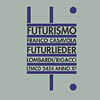 Futurism may have lost some of its futuristic appeal in the 100 or so years since its birth. That the works of a Futurist composer from the 1920s could sound so fresh may come as a surprise. Franco Casavola's compositions have little relation to the noisier side this movement is perhaps more famous for and that it does sound so fresh might be a testament to what Futurism stood for in the first place.
Futurism may have lost some of its futuristic appeal in the 100 or so years since its birth. That the works of a Futurist composer from the 1920s could sound so fresh may come as a surprise. Franco Casavola's compositions have little relation to the noisier side this movement is perhaps more famous for and that it does sound so fresh might be a testament to what Futurism stood for in the first place.
LTM
As fascinated as I am by early electronic music and by the use of noise as a musical element in any composition, the theories and conceptual framework developed by Filippo Tommaso Marinetti at the beginning of the 20th century never drew me firmly into the fold of Futurist thinking or electronic music. That it was almost undoubtedly tied to fascist politics also served to distance me from its machinations. The movement has undoubtedly influenced ensuing generations of artists and musicians, though. Just take a look at the cover for this album and the cover of New Order's Movement and the causal chain should become absolutely apparent (not to mention the robotic costumes that have been employed by various surrealist and dadaist innovators alike, all from the forward-looking artists of the Futurist era).
Franco Casavola represents a musically reserved and, dare I say, more classical approach to music: the Futurism in his work, though I am incapable of understanding Italian, must lay somewhere in the poetry and lyrics that make up much of this disc. Daniele Lombardi and Susanna Rigacci were employed to perform what were thought to be lost compositions from this Futurist-turned-anti-Futurist composer. Composed entirely of piano and Riggaci's lovely soprano voice, Futurlieder is a collection of different song cycles, advertising jingles (supposedly for Campari), cabaret pieces, and lyrical songs. Surprisingly, these are all pieces where the "experimental" aspects of the compositions are lost in the gentle wandering of idyllic piano and the powerful flow of high voices throughout. To my ears, anyone who can enjoy the pleasant talent of operatic performers and the simple ease of relaxing, solo piano pieces will enjoy this. I am by no means an expert of classical forms, styles, or theory, but this music is soft, gentle, and enjoyable in every aspect.
Casavola's real genius, then, would stem from his ability to write songs that have survived time just as well as the best classical composers. Unfortunately for supporters of Futurist ideals, that would mean any great composer of any era was Futurist in some sense, writing music resilient enough to survive long periods of times and severe changes in musical consciousness. Everything from his "Tango Viola da 'Cabaret Epilettico'" (a tango for an "Epileptic Cabaret") to his Tankas cycle is resonant with a playfulness that feels current and vibrant, alive despite its age. His poetic approach to topics, such as on his La Sera ("Evening") cycles, is always appropriate and harmonious, the concept matching the music superbly.
The liner notes provided by LTM are excellent, providing a competent, informative, and brief account of the composers life, works, and influences. An account of Casavola's literary work is also provided for anyone interested in the conventions and ideals he subscribed to. LTM's website contains a complete list of the music included on this disc as well as biographical information about this composer.
samples:
Read More
- Administrator
- Albums and Singles
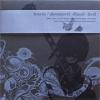 The eagerly awaited CD release of Dronevil doesn’t disappoint. Taking a leaf from The Flaming Lips and Neurosis’s respective books, this album is on two discs to be played simultaneously. Boris have done this trick immense justice: in the past multiple disc albums have been gimmicky but not so much here. One disc explores drones and the other sticks with Boris’s more straightforward guitar, bass and drum playing.
The eagerly awaited CD release of Dronevil doesn’t disappoint. Taking a leaf from The Flaming Lips and Neurosis’s respective books, this album is on two discs to be played simultaneously. Boris have done this trick immense justice: in the past multiple disc albums have been gimmicky but not so much here. One disc explores drones and the other sticks with Boris’s more straightforward guitar, bass and drum playing.
Inoxia
There is an 20 twenty minutes of music not found on the original LPs (40 if you’re playing the discs separately). The new piece, “Loose”/”Red,” opens the album. The piece is a slow burner, it takes nearly quarter of an hour for it to get going properly. On Disc Drone “Loose” is a shimmering drone that is mainly high pitched feedback and cymbals. “Red” on Disc Evil fills out the lower end of the sound with the band playing in a style similar to that found on Earth’s Hex album of last year. Combined it makes a powerful piece, separately they both lose their impact.
The next piece, “Giddiness Throne”/”Evil Wave Form,” doesn’t work as well as the first. The rock out disc is more beefed up but it doesn’t sync up with the drone disc as seamlessly as the first piece. “Evil Wave Form” on its own works perfectly well as a standard Boris riffathon. It’s only about halfway through when the overdrive is turned off that the drone fits in with the rocking out. Once the overdrive comes back on the drone goes through patches of sounding great and sounding annoying.
The final piece, “Interference Demon”/”The Evilone Which Sobs,” sees the two discs working great together again. Disc Drone contains a fierce sounding drone (again occupying the high end of the frequency spectrum) that is totally at odds with the subdued opening segment of “The Evilone Which Sobs.” When the piece kicks off it is face meltingly good. It’s well worth the hassle of moving the spare CD player into a position that you can hit play on both systems at the same time.
Dronevil –Final- is a cracking album but pointless if you’re not going to do it properly with two stereos. Even though the discs can be played separately, it’s only together that they shine. I suppose they could be mixed together but then the fun of having four speakers around a room blasting from different directions is lost.
samples:
- Evil Wave Form
- Interference Demon (play simultaneously with the mp3 below)
- The Evilone Which Sobs (play simultaneously with the mp3 above)
Read More
- Administrator
- Albums and Singles
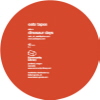 All-out silliness ensues the second this fine 12" starts spinning. Community Library has again proven their dedication to quality vinyl releases and Eats Tapes has proven that the liveliness and giddiness apparent during their live shows can be translated to a recorded format.
All-out silliness ensues the second this fine 12" starts spinning. Community Library has again proven their dedication to quality vinyl releases and Eats Tapes has proven that the liveliness and giddiness apparent during their live shows can be translated to a recorded format.
Community Library
"Dinosaur Days" is an all-out explosion of wiggling, analog bass and skittering percussion that had me on my feet the instant it began bumping. The robotic machinations of Gregory Zifcak's and Marijke Jorritsma's imagination and technology is more playful and more addictive on this 12" than anything found on their Sticky Buttons release and that's saying something. This is a two-sided release, though, and there's no reason to neglect that rubbery, balloon-like chaos of "Ptery D" or the more groove-oriented stagger of "Animal Minded." Eats Tapes like to stick to their four-on-the-floor formula, but the whacked-out tape manipulations and frantic melodies that splatter all over the walls defies categorization.
I had the chance to see them just recently on their Eats Coats tour and their live show was a energized burst of morphing synthetics and odd-ball distortion, much closer to what I'm hearing on this single than what's present on Sticky Buttons. There was a sense of child-like curiosity in their set and the random dancing of several patrons seemed to fit the innocent approach that was putting smiles on everyone's faces. If the fat, honking bass, unusual vocal samples, and even stranger musical deconstructions aren't enough to make even the most serious hipster smile, then I don't anything else will ever be capable.
samples:
Read More
- Administrator
- Albums and Singles
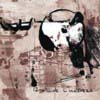 On their fourth album, this instrumental quartet from Barcelona pushes the boundaries of jazz, blending classical elements with psychedelic touches, effects, and just plain strange explorations. The result is one of the best unclassifiable jazz albums I’ve heard in years.
On their fourth album, this instrumental quartet from Barcelona pushes the boundaries of jazz, blending classical elements with psychedelic touches, effects, and just plain strange explorations. The result is one of the best unclassifiable jazz albums I’ve heard in years.
Much of contemporary jazz seems relegated to the dinner club crowd and lite FM stations, with all of the cultural cache of an open mike poetry night at a neighborhood community center. That it was once America’s most popular music for many decades is hard to imagine in today’s culture of tedious pop ephemera. What used to be a progressive style stopped evolving ten or even twenty years ago by all appearances, and has since been claimed by nostalgia buffs seeking comfort in the familiarity of old songs “updated” by younger performers.
Yet apparently nobody’s told any of this to 12twelve, and for that I’m grateful. Even though they only have one horn in the group, a saxophone, they manage to encapsulate the best aspects of a variety of jazz styles, from classical jazz to bop and free jazz. The exemplary rhythm section keeps them grounded yet invigorated, while the sax frequently takes off into passages of soaring lyricism. Despite a few exceptions, I’m not normally a huge fan of guitars in jazz, but here it works well as it investigates musical horizons without the burden of leadership.
There are some rock-like moments, such as the tasteful wah used on “Profesor Ali” and “Il Monstro,” yet even these are handled expertly enough to add texture without removing the music from the jazz idiom. The group isn’t afraid to be weird, either, like the noisy and abstract “9è 4°” or the electronics and anxiety of “R2 Chapa.” A couple of the songs even start with overheard conversations, at times lending the disc a casual and relaxed atmosphere. The album has enough differences between songs, and sometimes with plenty of changes within the songs themselves, that there isn’t a dull moment to be found. The emotions follow suit in a wide range of expression that never bores. Likewise, their vigorously imaginative and skillful efforts here go a long way toward revitalizing the genre, bringing to it a youthful energy and lack of compromise that hasn’t been evident for far too long.
samples:
Read More
- Administrator
- Albums and Singles
 If early '90s sounding techno happens not to be your thing you’re unlikely to enjoy the majority of this release. Tagged as ‘remixes and reconstructions’ from Danny Hyde’s (Coil member and remixer) Aural Rage project, this harks heavily back to the last decade’s commercial electronic music. Some of this could very easily be passed off as having been taken from charting releases of that era, and this is sort of a backhanded compliment to Hyde.
If early '90s sounding techno happens not to be your thing you’re unlikely to enjoy the majority of this release. Tagged as ‘remixes and reconstructions’ from Danny Hyde’s (Coil member and remixer) Aural Rage project, this harks heavily back to the last decade’s commercial electronic music. Some of this could very easily be passed off as having been taken from charting releases of that era, and this is sort of a backhanded compliment to Hyde.
Some of the sounds and styles on here sound like they really do belong back there. For example, the five tracks featuring Joanna De Seyne’s vocals are a little too thickly voiced, a little too techno diva and safe sounding for the world of 2006. Having never been fully seduced by Hyde’s Love’s Secret Domain Coil-era work, it’s understandable that a lot of this should be passing by me. Perhaps without the remixing efforts of DJ Poltergeist and MC Ramification (whom I’m starting to convince myself are only Hyde pseudonyms anyway), this might be a little more rough and edgy.
When it does slip away from the grips of the remixers (according to the credits), as on "Hippy Cult Leader (Intro)"or "I Don’t Need That Deviant Sex Thing (Calm Before the Porn Edit)", it seems that little bit more human. Inventive and restless without being too dense, they manage to carry that baggage of yesteryear without sounding like they were recorded in it. On the plus side there seems to be a lighter touch to Sinsemilla Dreams than there was on A Nature of Nonsense, this appearing less noticeably layered. These tracks seem to be more jagged, and in the case of the latter song is instilled with a motionless melancholy; the title becoming more of a realisation than a rehashed eighties punch line.
Those wondering how the remixed tracks with Jhonn Balance worked out this time ("FJ Nettlefold" is versioned here twice) may be interested to hear that while one take is harsher and the other is squelchier, neither are as good as the original. Hopefully Sinsemilla Dreams is just a brief remix project stopgap along the way to the next album.
samples:
- Argento Meets the Skinheads (Black Zodiac Mix)
- FJ Nettlefold (Radar Angels Mix)
- I Don’t Need That Deviant Sex Thing (Calm Before the Porn Edit)
 
Read More
- Administrator
- Albums and Singles
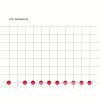 All the pieces on Patherns are composed of rhythmic noises that at the right kind of party at the right time could get the crowd dancing. The four pieces on this EP are less abstract than Ivan Pavlov’s more recent work; there is less chin scratching here than on this year’s Above Air album. Unfortunately there’s less depth to Patherns, enjoyable as it is.
All the pieces on Patherns are composed of rhythmic noises that at the right kind of party at the right time could get the crowd dancing. The four pieces on this EP are less abstract than Ivan Pavlov’s more recent work; there is less chin scratching here than on this year’s Above Air album. Unfortunately there’s less depth to Patherns, enjoyable as it is.
Raster Noton
All four of the tracks are quality stuff. All are based around simple rhythms with various noises and counter rhythms layered on top. It's deceptively simple at the surface, but there’s a lot of background detail that only reveals itself after a few listens. The first half of the CD is pleasant enough but neither of the first two tracks sticks out as being memorable.
The EP definitely peaks on “Path. #3 (Dynamo Baby, Bore me Numb)” (probably why Pavlov gave it a title and not just another number). Here, a solid rhythmic base is paired with an airy synth melody reminiscent of some of Kraftwerk’s Tour de France melodies. It flows along nicely as Pavlov chops and changes it, stopping it from becoming stagnant. It leads into “Path. #4,” which sees Pavlov manipulating some basic rhythm sequences slowly, sounding like commercial dance music with a lot more bite.
Patherns is neither his best nor his worst work but it is a worthy effort by Pavlov. It was surprising to see an EP by him so soon after the last album, especially considering it wasn’t just a bunch of outtakes from the same sessions. It could have been far more prosaic but the accessibility of the material made the EP worth listening to. Unfortunately I don't think this has the longevity to keep me coming back to it.
samples:
Read More

